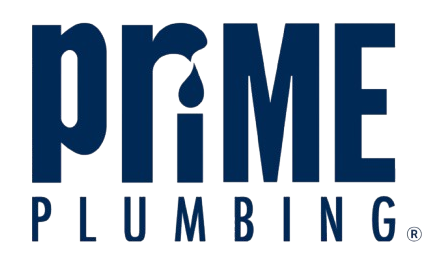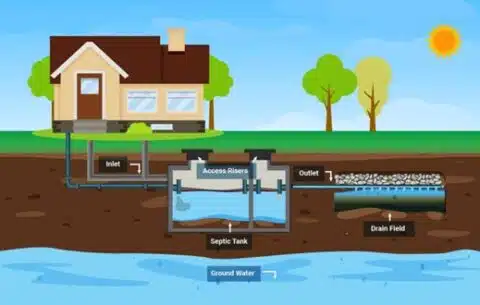Service 7 Days a Week
Proudly Serving Baltimore
All About Residential Septic Systems

Save Time, Call Prime!
Septic systems play a vital role in residential properties, providing a reliable and efficient method of wastewater management. These self-contained systems are essential for homes not connected to a municipal sewage system. While often hidden underground and overlooked, septic systems are crucial for maintaining a clean and healthy environment for both homeowners and the community at large.
In this blog, we delve deeper into the functioning of septic systems, explore their components, discuss maintenance tips, and provide valuable insights to ensure the optimal performance of these essential systems.
Call Prime Plumbing at 443-741-1129 for expert septic system assistance in Baltimore, MD, or contact us online to schedule an appointment.
What Is a Septic System?
A septic system is an underground wastewater treatment system commonly used in residential properties not connected to a centralized sewer system. It consists of several key components that work together to treat and dispose of household wastewater in an environmentally friendly manner.
The makeup of a septic system includes the following components:
- Septic Risers: A septic tank riser is a pipe that extends from the surface of your yard to your septic tank underground. The riser connects to the septic tank at the pump-out openings or access points. Septic tanks cannot be pumped thoroughly without them.
- Septic Tank: This is a watertight container made of concrete, fiberglass, or plastic. It receives all the wastewater from the house through inlet pipes. Inside the septic tank, solid waste settles at the bottom to form a layer of sludge, while lighter materials like grease and oils float to the top to create a scum layer. Bacteria and enzymes present in the tank help break down the organic solids.
- Baffles: These are partitions or walls within the septic tank that prevent the scum layer and sludge from flowing out into the drain field. Baffles ensure that only treated effluent is discharged.
- Drain Field (or Leach Field): The drain field is a network of perforated pipes buried in trenches or beds in the soil. The treated wastewater, known as effluent, flows out of the septic tank and is evenly distributed through the pipes into the surrounding soil. The soil acts as a natural filter, removing harmful bacteria, viruses, and other contaminants as the effluent percolates.
- Soil: The soil beneath the drain field serves as the wastewater’s final treatment and purification stage. It provides a medium for biological processes, further breaking down and treating any remaining impurities in the effluent.
Through the combined action of physical, biological, and chemical processes, septic systems effectively treat and safely dispose of wastewater.
How Often To Pump a Septic System
Regular pumping and maintenance are essential to prevent system failures, costly repairs, and environmental contamination while safeguarding public health and protecting groundwater sources.
Pumping Access:
Appropriate access points, or risers, are essential to clean your septic tank thoroughly. Older septic systems may not have risers, and often we see tanks installed with risers that are too small (6-inch diameter), which prevent the proper removal of all of the solids from the tank. It’s a good idea to install 18- to 20-inch diameter risers to ensure proper cleaning. They will provide much better access, causing less damage and saving you money in the long run.
Pumping Frequency:
Regular septic tank pumping is significant as it helps remove accumulated sludge and scum from the tank, preventing them from clogging the system and causing backups or failures. Pumping also allows for proper inspection of the tank, identifying any potential issues early on and ensuring the optimal functioning of the septic system, prolonging its life span and reducing the likelihood of expensive repairs or replacements.
Septic tank pumping frequency varies depending on household size, water usage, and tank capacity. As a general guideline, it’s recommended to pump the septic tank every other year for an average-sized household with a typical tank capacity of around 1,000 to 1,500 gallons. However, specific recommendations may differ depending on household size, water usage, tank capacity, and local regulations.
Consult with a septic system professional who can help you assess your specific needs and establish an appropriate pumping schedule tailored to your household’s requirements.
Improper Septic Maintenance can be Costly – and Stinky.
Improper sewer system maintenance can lead to a range of potential problems, including:
- System Failures and Backups: They can result in sewage backups in the home, causing unpleasant odors, health hazards, and costly repairs.
- Groundwater Contamination: untreated wastewater may leak from the system, contaminating groundwater sources.
- Environmental Pollution: harmful bacteria, viruses, and chemicals may leak into the environment, negatively impacting nearby surface water bodies and harming aquatic ecosystems and wildlife.
- Costly Repairs and Replacements: may result in expensive repairs or require sewer system replacement.
- Legal and Regulatory Issues: some jurisdictions have legal and regulatory requirements for septic system maintenance. Failure to comply with these regulations can result in fines, penalties, or legal consequences.
With proper maintenance, your sewer system will last 20 to 30 years.
Tips for Keeping Your Septic System Healthy
✔ Don’t use garbage disposals: They can overload your septic system with excessive solid waste, leading to clogs, increased sludge accumulation, and potential system failures. Instead, consider composting food waste, utilizing municipal composting programs, or feeding scraps to animals (if appropriate).
✔ Use septic-safe toilet paper: Paper labeled septic-safe, biodegradable, or specifically designed for use in septic systems will break down more easily, reducing the risk of clogs.
✔ Use safe soap products: Antibacterial or chemical-laden products can disrupt the natural bacteria in the system, hindering its ability to break down waste effectively. Opting for alternative and eco-friendly cleaning options, such as vinegar, baking soda, or plant-based products, helps preserve the integrity of the septic system while minimizing environmental impact and promoting a healthier home environment.
Taking proactive steps now will ensure your septic system’s long-lasting functionality and sustainability.
For answers to septic system issues or any plumbing problems, contact the experts at Prime Plumbing, your trusted partner in plumbing solutions.
The Difference With Prime
Get a FREE second opinion on water and sewer service, and septic repair/replacements!
Don’t Just Take Our Word for it

Why Choose Prime Plumbing?
Professional Services at an Affordable Price
- Transparent Pricing
- No Additional Charges for Overtime
- Flexible Financing Solutions
- Thorough Employee Background Checks
- Complimentary Second Opinions



